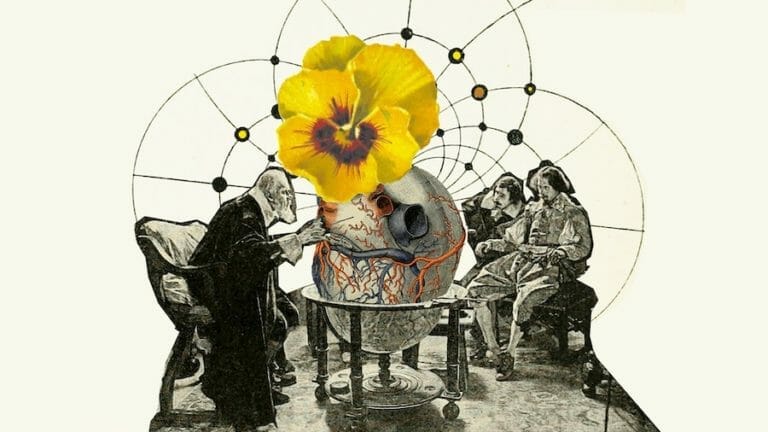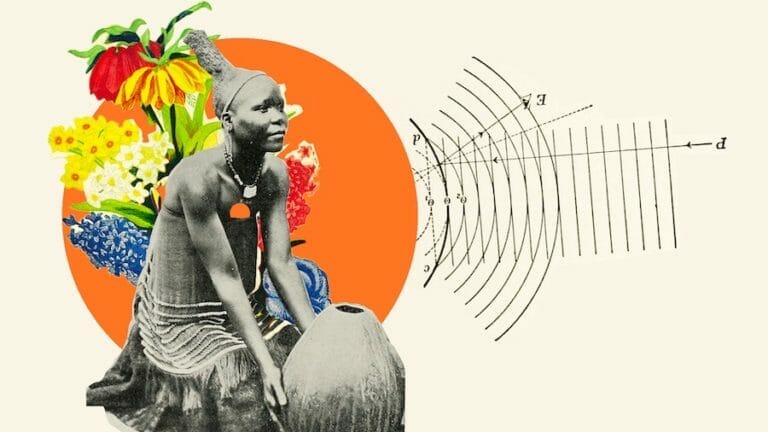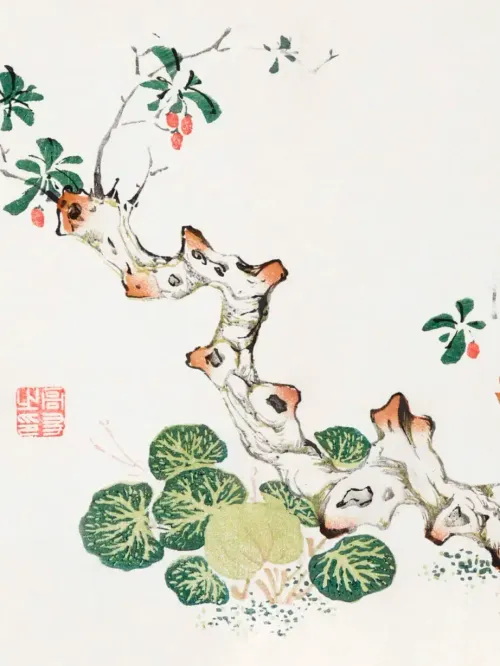What does it mean to be well? These days, people are thinking about illness and wellness more than ever. Unfortunately, capitalism tells us literally to buy into the wellness craze of juice cleanses, yoga retreats, and expensive bath products. Hidden under the guise of “self-care,” these trends claim to bring healing.
The Western-Medical Industrial Complex Paradigm of Healing
Healing and wellness of the mind, body, and spirit are intricately connected, but the current healthcare model falls short of realizing this goal. Traditional healing in indigenous cultures worldwide draws no separation between the body, mind, and spirit. How and when did so many of us become disconnected from our ancestral roots of medicine?

In today’s world, a person may go to a primary care doctor for a yearly check-up, a cardiologist to run tests on a family history of heart disease, a nutritionist to find the proper diet, a personal trainer to stay in shape, a therapist to cope with mental and emotional health, and a life coach to figure out their business and professional goals. The list goes on and on. It’s no wonder so many of us feel overwhelmed and burned out. When did taking care of ourselves become such an arduous task? The World Health Organization (WHO) defines health as “a state of complete physical, mental and social well-being and not merely the absence of disease or infirmity.” However, modern western medicine, especially in the U.S. in white, privileged communities, has become laser-focused on curing ailments at the expense of considering what it means to heal in the context of holistic well-being. It often uses the terms “battle” and “fight” in the context of working to prevent the harmful effects of diseases. When did our bodies, minds, and spirits become separated and siloed into so many different categories? When did our bodies become battlegrounds?
There is a disproportionate focus and value placed on technology in modern science and healthcare. “Cutting-edge” technology, new equipment, and invasive procedures are seen as superior to traditional healing methods, categorized as old-fashioned at best and dangerous at worst. However, as the WHO asserts, 65-80% of the world’s healthcare practices involve the use of traditional medicine, which is defined as “health practices, approaches, knowledge, and beliefs incorporating plant, animal and mineral-based medicines, spiritual therapies, manual techniques, and exercises, applied singularly or in combination to diagnose, treat and prevent or maintain well-being.”
Another Way: Indigenous Healing Practices
Historically and presently, traditional healers in indigenous societies have practiced medicine in several ways. Across every continent on earth, ancient ancestral healing practices have prevailed across time and space. There is a rich history of using medicinal plants to heal the mind, body, and spirit, tracing back thousands of years to early Egypt and Mesopotamia. Written records show that herbal medicine was practiced as much as 60,000 years ago in modern-day Iraq and 8,000 years ago in China. In fact, in many countries which are pejoratively labeled as “developing,” traditional healing methods are still the primary form of healthcare.
For instance, in several countries in Africa, traditional medicine treats physical and mental illnesses with indigenous medicinal herbs and spiritual practices. Far from being alternative, research shows that 72% of the Black African Population in South Africa use traditional medicine across various age groups, education levels, and occupations. In Latin America, “curanderismo” in Spanish or “curandeirismo” in Portuguese refers to the historical healing practices of balancing the body, mind, and energy through the use of ritual ceremony and herbal medicine. On Turtle Island, as it is known to First Nations people from the region (North America), sweat lodges have been common as a part of indigenous healing rituals, together with herbalism. Traditional Chinese Medicine (TCM) has a well-documented and extensive history of herbal medicine for physical, emotional, and spiritual health, focusing on an energetic map of the body based on meridian theory. Modern-day Middle Eastern medicinal culture is based on a well-preserved legacy of traditional medicine of herbalism, dating back centuries.

After the fall of the Roman Empire, the region of Baghdad became the center of scientific and medical knowledge. It was home to the first drug stores and models of professional pharmacies. Some of these ancient formulations persist even today. In Australia, Aboriginal indigenous people practice bush medicine, characterized by oral knowledge passed down through generations, using plants to restore and maintain the balance between the physical and spiritual bodies. The ancient Indian practice of Ayurveda is one of the oldest medical systems in the world, which continues to be used today, consisting of a combination of treatment through diet, exercise, lifestyle, and medicinal plants. While Europe and the Mediterranean were early sites of colonization and destruction of indigenous culture, these areas also have rich histories of traditional medicine, although much of it has been lost prior to the Greek and Roman Empires.
Colonization’s Effect on Indigenous Healing
The view of traditional healing practices as ineffective results directly from colonization. Colonization, white supremacy, and the consequent displacement of indigenous peoples from their land caused a disconnect in healing and medicine. When indigenous peoples were separated from ancestral land, traditional food, community, and rituals, it became difficult, if not impossible, to maintain indigenous practices of herbal medicine. Colonization and displacement of indigenous people are by no means ancient history: these are ongoing practices that continue to harm people across the globe and endanger the sacred connection to traditional medicine.
Indigenous communities are often referred to in the past tense, erasing the existence of present-day indigenous cultures and healers. For centuries, indigenous people have lost their ancestral lands, in the United States, for instance, pushed out of cities into rural areas euphemistically referred to as “reservations.” Nevertheless, many people worldwide have never stopped practicing traditional medicine, by choice or out of the necessity of not having access to more “modern” forms of treatment, fighting oppression and colonialism by maintaining ties to their indigenous roots.

However, as the dominant modern western culture realizes that something is missing from our conventional healthcare systems, there is an appetite for turning toward traditional methods and practices of indigenous medicine, which brings a growing risk of cultural appropriation. Adopting indigenous practices out of context and without advocating for the rights of indigenous people and land and their sacred connection to traditional methods and practices is an unfortunately common and harmful reality. This rise of “wellness trends” and what is often referred to as an “herbal renaissance” frequently involves appropriating practices of indigenous cultures, such as recipes for “golden milk” (a traditional Ayurvedic turmeric beverage) or burning bundles of white sage and Palo Santo as a form of energetic cleansing (threatened sacred plant medicines for the Native indigenous people of Turtle Island).
“Traditional medicine” has been criticized due to the lack of standardization or regulation and is looked down on and disrespected and stigmatized as “primitive” and “superstitious.” However, over the past 400 years, many of the drugs used in “western medicine” as it’s known, especially in the U.S., have been developed by extracting compounds from plants—for example, aspirin was developed based on salicylates, found in white willow bark. With 75% of the world’s population using herbs for basic healthcare needs and many conventional pharmaceutical drugs derived directly from natural and traditional remedies, there is a false dichotomy between traditional and modern medicine. In many cases, modern scientific medicine finally “catches up” and finds that traditional practitioners were correct all along. Then, pharmaceutical companies swoop in, buying up all the raw materials of plant compounds from indigenous communities, patenting drugs, and extracting and profiting by taking medicine from the land and the people.
Challenges in Traditional Healing and Pathways Forward
Both healers and patients suffer from this modern dynamic, prioritizing profit over care. People who seek care are often in a vulnerable position, in need of support. For true healing and equity for all, we must strive for universal access, blending the technological advances of conventional medicine and indigenous healing traditions. At the heart of this is the issue of individual and collective agency. In the current medical model, patients are stripped of their agency. The established hierarchy between practitioners and patients is based on the patriarchal model of handing over their choices to an “authority” figure who is an “expert” in the field. While we should take advantage of the years of medical study that professionals undertake, it cannot be at the expense of our agency.
This applies on a collective scale as well. The globalization that followed colonization has brought many benefits to our now interconnected world and, at the same time, adds another layer of disconnection from our ancestral knowledge. Colonialism has forced many “developing” countries to be dependent on aid from “western” countries, further contributing to the paternalistic model of imperialism. When we tune in more deeply to the collective, we might ask, how is global and environmental health reflected and harmed by this division and fragmentation? Could climate change and harm to the earth result from the separation of land and people, and consequently, people and medicine?
This begs the question, how do we bridge these “opposite” sides of the spectrum, taking advantage of the benefits of modern technology while reconnecting to the whole, deep ancestral medicine in the care of the mind, body, and spirit?

Conventional practitioners in the current system focus on curing disease and symptoms with over-the-counter or prescribed drugs, using invasive diagnostic tests to find the “problem.” Focusing on this kind of episodic care ignores the broader definition of health. Evidence-based medicine often comes out of randomized controlled trials, observing factors in isolation and distorting the interpretation of intersecting variables. This approach is heavily influenced by the constraints imposed by insurance companies and the pharmaceutical industry, siloing practitioners into specialties and separating not just the mind, body, and spirit but also each part of the body from a whole, leading to a fragmented understanding of the whole picture of an individual’s health.
This focus on specific factors is limiting. Central to Integrative medicine is the idea that we cannot separate an individual into parts, nor can we separate an individual from the collective. Integrative medicine seeks to shift research to the context of the individual situated in an interwoven collective, zooming out for a broader perspective of the connection between community and health. Our environment influences all aspects of our health: not only diet and nutrients, access to exercise, and pollution, but also social and community connections, how we process trauma, oppression, discrimination, and numerous other factors.
The focus on the individual within the collective extends beyond the patient to the care teams. Rather than relying on one practitioner for all needs, which can lead to practitioner burnout (unfortunately, increasingly prevalent today), integrative medicine encourages multidisciplinary healthcare teams working in tandem to provide coordinated, continuous, and comprehensive care. Integrative medicine also evaluates how practitioners’ self-care, self-exploration, and self-development are critical for better patient outcomes.
The current dominant health care systems and models are not designed to address an individual’s unique needs. Indeed, 15-minute rushed appointments aren’t sufficient for developing meaningful relationships. Integrative medicine is based on a different model: a personalized approach, grounded in partnership between practitioner and patient, fostering agency and empowerment. These relationships are centered on communication, trust, empathy, and a strong emotional connection to promote a deeper understanding of illness. Beyond treatment, this relationship encourages health promotion and prevention through education. This patient-centered model of care enables the practitioner to meet the patient where they are and take an active role as part of the care team and responsibility in being the ultimate decision-maker of how they want to live and what health means to them.

Integrative medicine recognizes the practice of medicine as intricately linked to spiritual healing, mental health, and emotional well-being, not questioning whether these associations exist but instead seeking to understand how they manifest in an individual and how they affect a person’s treatment and response to therapy. The scientific model is valuable in objective research, but it’s limited for therapeutic applications in our modern healthcare environments. These models often underestimate how the environment can affect treatment outcomes, a phenomenon David Rakel describes as the “healing encounter,” consisting of “1. An emotionally charged relationship with a helping person 2. A healing setting…3. An explanation for the symptoms that resulted in the sense of control and understanding 4. A ritual, procedure, or plan that involves active participation of both parties that each believes will restore the person to a state of health.” Here, we see the incorporation of indigenous knowledge and traditional medicine practices in integrative medicine.
While integrative medicine incorporates advanced technologies when appropriate, the fundamental blueprint originates from ritualized care grounded in relationships and communication, seeing the individual as a whole, inside a greater collective. Integrative medicine strives to honor scientific research and technology alongside traditional practices to identify the specific needs of communities to prevent and treat illness, rather than waiting until health, individual or collective, has reached a critical breaking point. We are at that breaking point now, and integrative medicine provides a path forward (or back) to provide holistic global health care for all.
External Resources
Traditional healing practice and folk medicines used by Mishing community of North East India
Evidence-Based Medicine and the Potential for Inclusion of Non-Biomedical Health Systems: The Case for Taijiquan
